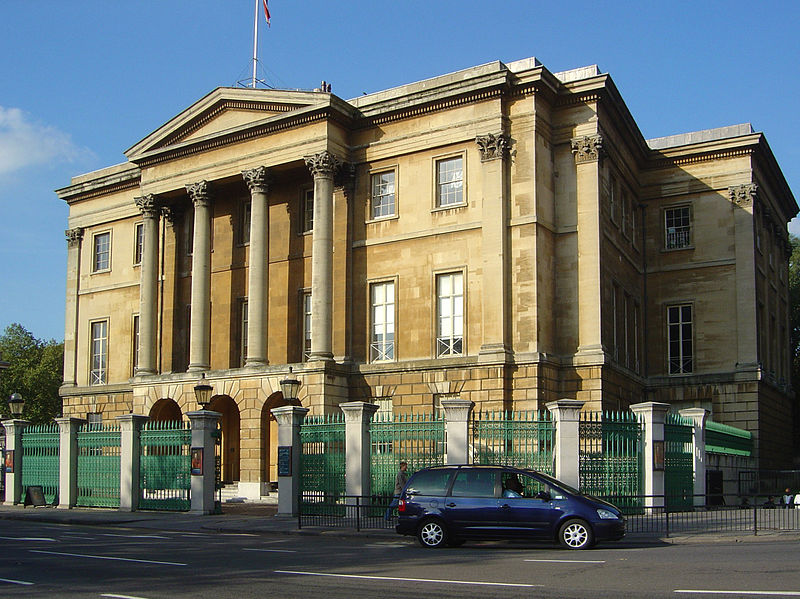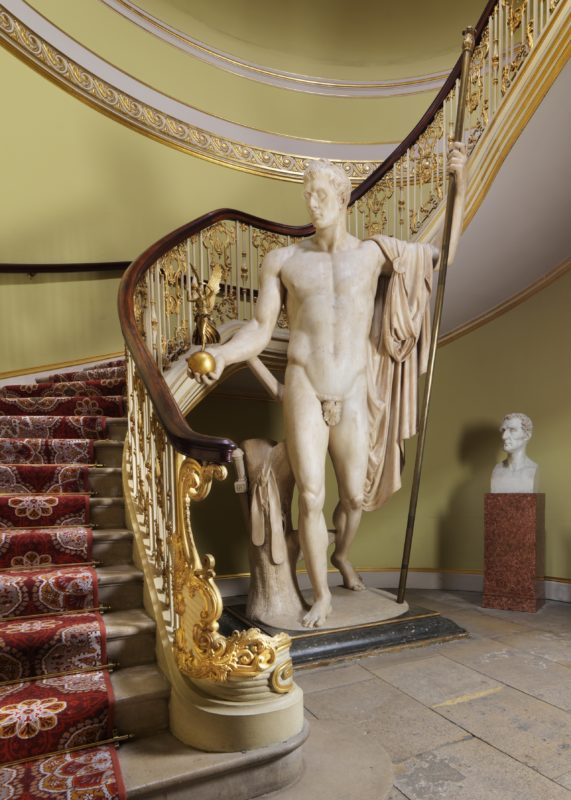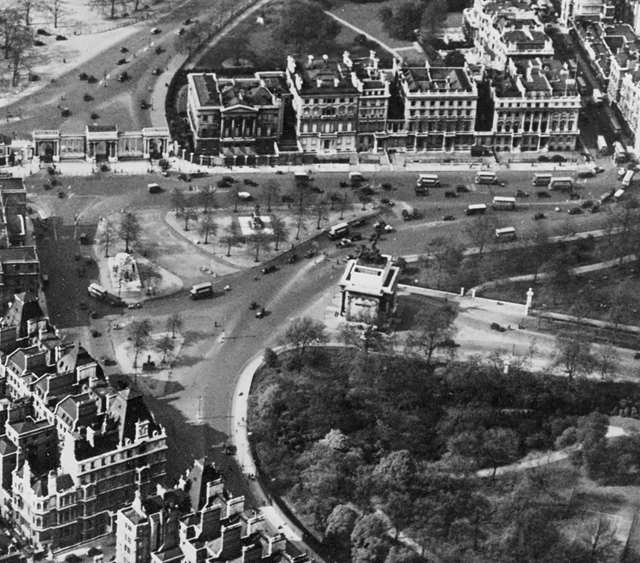
You’re likely to have been past this place several hundred times, because Apsley House is the big, honey-coloured building on the north side of Hyde Park Corner, facing into the traffic with its back to the park.
Formerly the home of the Duke of Wellington, victor over Napoleon in Spain, Portugal and at Waterloo, Prime Minister under George IV and William IV, the house is still occupied by the current, 9th, Duke.
That particular corner of the Park is awash with Wellington monuments (it was once called Wellington Place). The Wellington Arch (through which the Household Cavalry ride each morning, and under which the cycle path runs) is in the centre of the glorified traffic island, and close by, facing the house, is a mounted statue (by Joseph Boehm) of the Duke himself, flanked by a grenadier, a Scottish highlander, an Irish Dragoon and a Welsh Guard. And in the Park, just behind the house is the actual ‘Wellington Monument’, a statue of Achilles by sculptor Richard Westmacott, cast in bronze from cannons capture at Waterloo and erected in 1822. Achilles was the subject of some controversy when it was unveiled as it is a nude (except for a fig leaf), and so felt by some to be an outrage to public decency.
The house was bought by the Duke (from his own brother, who needed the cash) with some of the £700,000 given to him by the state after the final defeat of Napoleon. That’s an amount of money worth about £90 million in today’s prices. The original house was by Robert Adam and was considerably smaller; Wellington commissioned Benjamin Dean Wyatt to extend and radically remodel the place – and had the classic client/architect relationship, in that Wellington fell our with Wyatt about time and cost overruns to the extent that he refused to speak to him.
Walk through the gates in the iron railings that were added after a mob besieged the house in 1832 (they were chased off by Wellington’s butler firing a blunderbuss), and which are possibly the origin of the ‘Iron Duke’ nickname, and open the front door. You do feel as if you’re stepping back a couple of hundred years; the noise of Hyde Park Corner seems to fade, there is a lot of space (it’s never busy) and you half expect Wellington’s porter to ask you your business.
English Heritage manage the museum (it currently costs £10.50 to visit), and treasures of the collection include paintings – some granted to Wellington by the Spanish government, some commissioned by him, and some of the man himself, including the famous Thomas Lawrence portrait. Other highlights include the centrepiece to the “Portuguese Service” – a huge silver table decoration in the State Dining Room(although its virtually the size of the grand dining table), which is decorated with dancing nymphs, candlesticks in the shapes of palm trees and figures representing the four continents. It took 150 men over 4 years to make.

There are also some impressive artworks from the Spanish royal collection, including works by Goya and Velazquez (these were captured from Napoleon’s brother Joseph Bonaparte, but gifted to Wellington by the Spanish King); and Canova’s statue of Napoleon as ‘Mars the Peacemaker’). Twice life size, it shows Napoleon as a Roman god, naked apart from a fig leaf, and dominates the principal staircase. It would have been seen by all visitors to the house and by Wellington himself every day.

Unofficially known as “No. 1 London” the house was once part of a ‘parade’ of such grand houses at the western end of Piccadilly, but the remainder of these were lost to the widening of Park Lane in the 1960s.
The 7th Duke gave the house to the nation in 1947, and the provisions of the Wellington Museum Act in that year gave the right of the family to occupy just over half the house ‘so long as there is a Duke of Wellington’.
Apsley House is open Wednesday to Sunday. You can find visitor information here.
